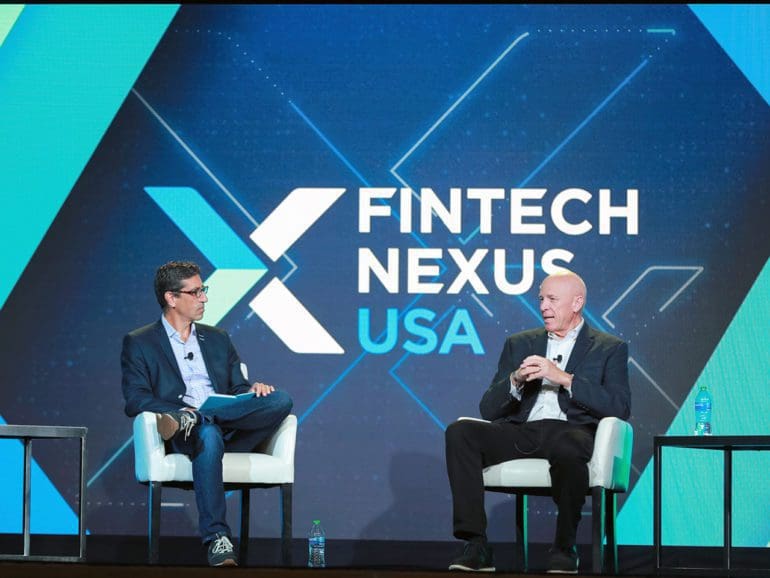As the world inches further forward with the adoption of stable coins on a mass scale, the question turns to how banks should respond.
At Fintech Nexus USA 2022, Terry Angelos, CEO of DriveWealth and ex-head of Fintech and crypto at Visa, met with Alan Lane, CEO of Silvergate Bank, to tackle the subject on the keynote stage.
“Last year at Visa,” said Angelos, “We interviewed about 6,000 consumers around the world and asked them how they viewed crypto and digital assets. One of the questions we asked them was, how likely would you be to switch your bank to one that offered crypto services? And over a third of respondents said that they would.”

The media hype around digital assets has been steadily growing.
For many, cryptocurrency is a desirable asset. Banks, being the traditional totem of trust for consumers’ financial transactions, are perhaps the logical choice when delving into a new asset class. However, with fintechs leading the way with the latest technology, the question still stands – how should banks respond?
The impact of crypto on banks
“I’m not sure that we know what the impact of crypto will be on banks,” said Lane. “One of the things that many community banks are doing right now is they’re partnering with a firm called Nydig to provide access for their customers to be able to buy bitcoin.”
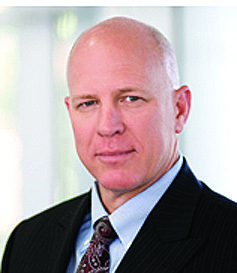
“That’s an interesting experiment, but it’s not clear to me that a lot of retail, community bank branch customers will want to buy bitcoin from their local branch. However, the Visa survey indicated that that might be an opportunity.”
“At Silvergate, we’re institutionally focused; we don’t have branches or have consumer clients directly. So we enable digital currency platforms to offer cryptocurrency, Bitcoin, and other digital assets to their customers.”
Silvergate, after being one of the initial innovators in the space, has continued to grow in popularity. Earlier this year, the company’s revenue grew by 93%, while institutional interest in crypto took a significant hit.
Silvergate’s “Secret” Initial Innovation: a compliance department
According to Angelos, customers showed little interest in banks creating stablecoins and actively engaging in crypto technology within the Visa survey. Their requests focused on the banks taking their investment in fiat and storing the asset.
“It’s interesting to me that that’s still the number one request, which indicates that we’re still really early,” responded Lane.
“What we saw back in 2013 was that these new companies were being formed to provide services to this new digital asset called Bitcoin. They were essentially new fintechs, a lot of them just providing a new service. Still, because they were deemed to be money service businesses, there was this whole regulatory and banking regulatory overlay about how banks needed to interact with these companies.”
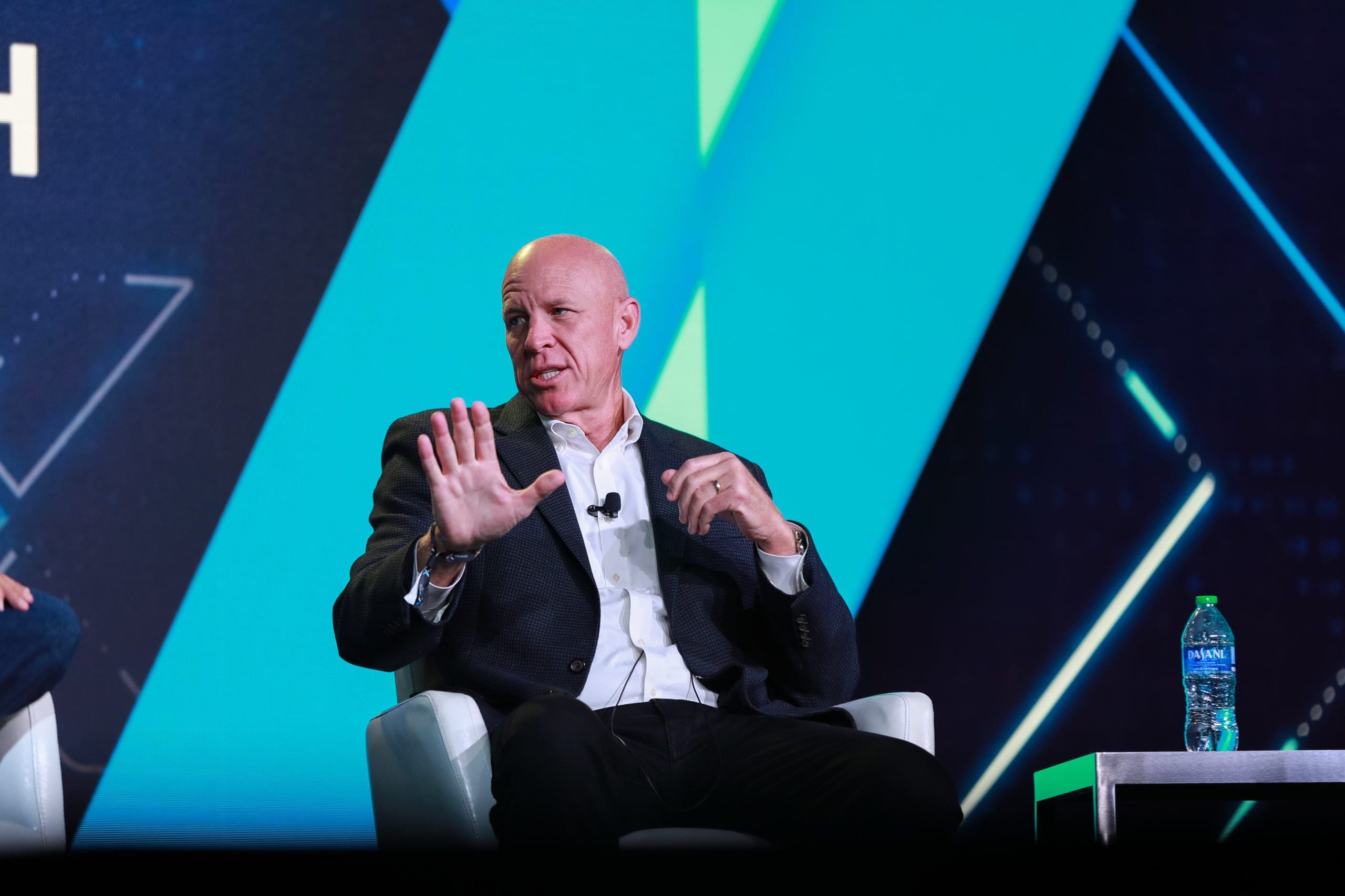
“Because it was so new and small, most banks were just stiff-arming it and saying, ‘we’re not going to touch this.’ What we saw was a new industry potentially being formed that was raising venture capital money. They had deposits, and they were being shunned by the broader banking ecosystem.”
“Where other folks just saw risk, we saw a potential opportunity, provided we could bank these companies in a regulatory compliant, safe, and sound manner. So that’s what we set out to do; build a regulatory compliance program to be able to bank this ecosystem.”
Starting with deposits, Lane explained that Silvergate has now steered the whole bank to operate in this space.
SEN Network: Meeting a need for 24/7 payments
“We opened our first account for a Bitcoin-related company in January of 2014. Our competitive advantage was; that we were willing to talk to the account holder, and we were building a regulatory compliant platform.”
Lane explained that Silvergate was very aware that once larger banks accepted the new technology, they would have a lot more money to dedicate to creating a regulatory compliant program. This would undermine their initial competitive advantage.
“Our view was that the initial approach was not sustainable; that’s really why we transitioned in 2016 to create what has become really critical infrastructure for the ecosystem. The Silvergate exchange network or the SEN.”
“What it does is it allows our customers to transfer US dollars between themselves 24 hours a day, seven days a week, which is coincidentally the hours that the cryptocurrency markets trade.”
“The SEN is not a blockchain, so we did not need to create a blockchain to facilitate moving dollars, as long as both customers were banking with us. And we created an API that’s proprietary that allows our customers to move dollars amongst themselves 24/7. That is what enabled the stable coin issuers, the regulated ones inside the US, to really grow and prosper.”
The SEN works with multiple stablecoin issuers, including Circle, Gemini, and Coinbase, providing real-time USD and EUR settlement 24/7, 365 days a year.
“We were, I think, the first bank in the world to bring the legacy banking system that only operates normal business hours Monday to Friday into the cryptocurrency 24/7 365 global trading market.”
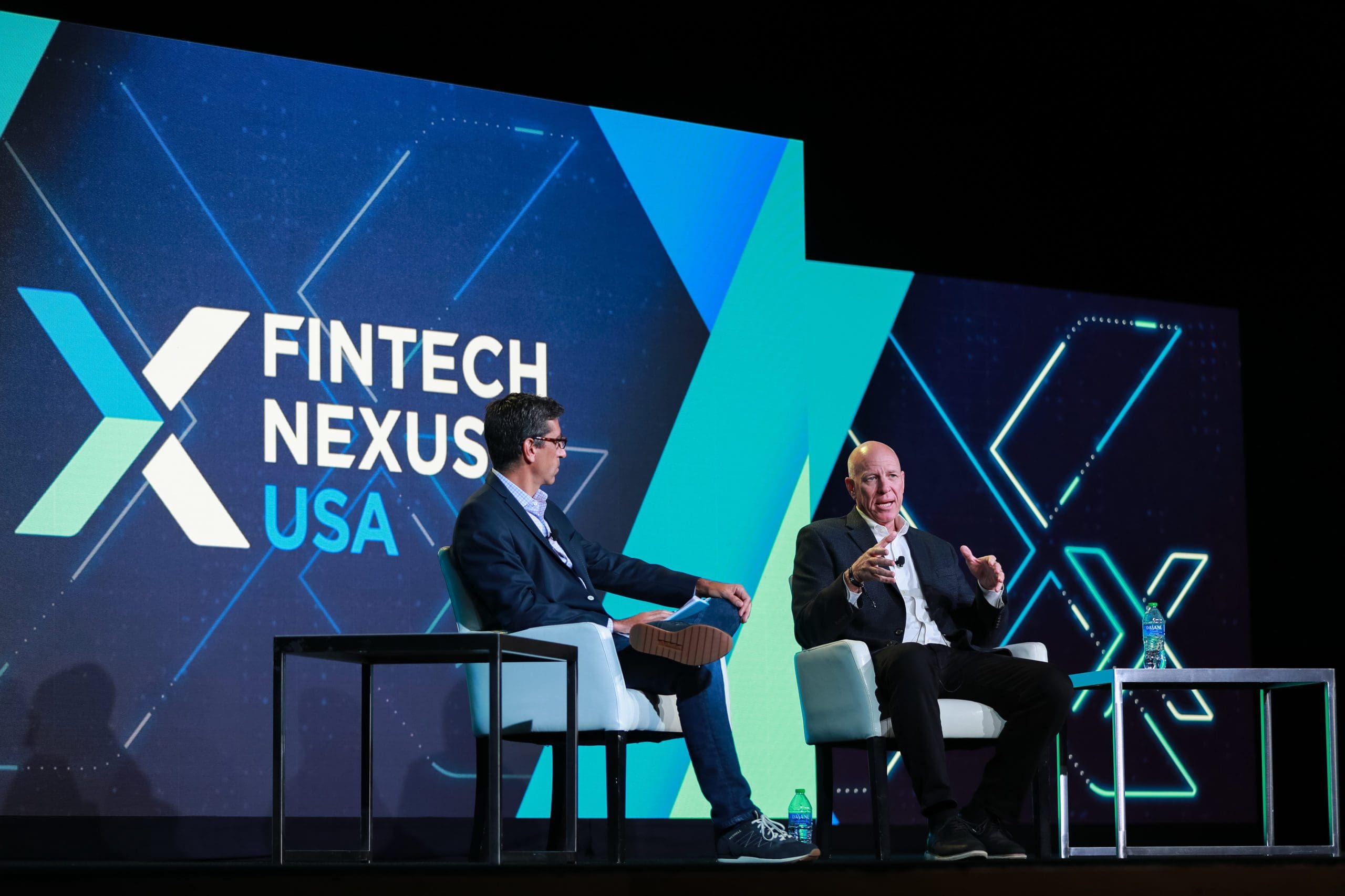
Use case for Stable coins overwhelming
Silvergate’s API disrupted the market significantly, and they are now significant actors within the stablecoin settlement space.
“The current use case for stablecoins is overwhelming for cryptocurrency trading,” continued Lane. “It was really born out of a need which was the same need that we were trying to address – the ability to transfer $1 around the ecosystem. 24/7.”
“Stablecoins have US dollars sitting in a bank or multiple banks backing them. You move inside the US, and you have USDC. But there are others; the Pax dollar, the Gemini dollar, and true USD, all of those stable coin issuers bank with Silvergate. And they use our API for minting and burning their stable coins.”
“If one of their customers comes to them and says I want to purchase USDC, they send dollars into Circle’s bank account at Silvergate. When those dollars hit that bank account, there’s an automatic API connection that then mints the USD on the USDC, whatever protocol they use. As soon as the dollar comes in, a USDC token is minted on the blockchain and sent out to that customer’s wallet. All of that is currently being used primarily for cryptocurrency trading.”
“What we see at Silvergate is the same technology, putting a tokenized dollar on the blockchain so that $1 is $1. If I have a digital dollar that’s been tokenized, there’s $1 backing it in the bank account, and that can move around the ecosystem. It’s an instant settlement, and it’s 24/7.”
Silvergate facilitates this B2B through partnerships enabling partner use of SEM for their customers. Using this technology, companies, such as Starbucks, which are now facilitating the use of cryptocurrency in-store using their apps, can provide customers with quick and easy ways to top up their accounts directly with dollars.
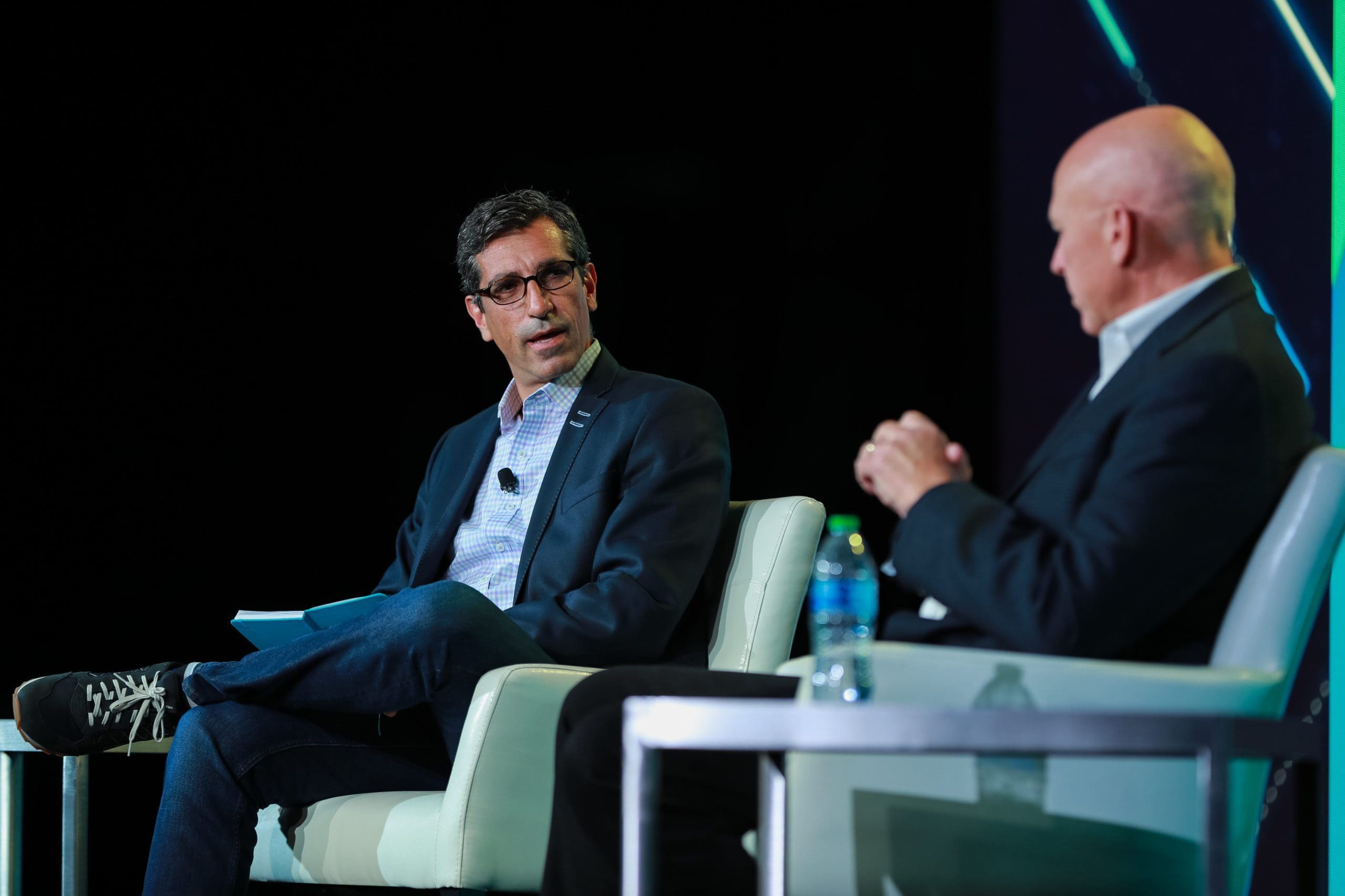
Settlement of currency before payments
Before starting at Drive Wealth, Terry Angelos was head of Fintech and crypto at Visa. In 2021 Visa made a groundbreaking decision to initiate a pilot project with USDC after recognizing a use case for settlement.
“The strategy at the time was very much to facilitate the settlement of currency,” said Angelos. “If you think about the payment networks, in crypto terms, these are highly centralized, trusted layer twos, right. So, I go and tap my US-issued Visa card at a tube station in London. And that tube station immediately accepts the payment. That’s a better layer, two, highly centralized, highly trusted authorization network. I’m allowed to enter the tube.”
“But the layer two networks are sitting on top of these – slow, buggy Fiat layer ones because we still have to get money from my issuing bank to the acquiring bank of that tube station in London. That’s the layer that Visa is looking at having USDC as a settlement currency, that’s a pilot program that we started last year, and we’ll see where that goes.”
Angelos explained that direct payments to merchants in cryptocurrency could take a while to come to fruition. He highlighted that there are multiple things to consider when accepting cryptocurrency. Until that is simplified on a larger scale, it is doubtful there will be mass adoption of peer-to-peer payments.
“Maybe over time, that’ll transpire. But if you go to the underlying settlement networks, I think you have a lot more opportunity, which is why I think capital markets trading, why settlement seems to be a place where stable coins are active.”


